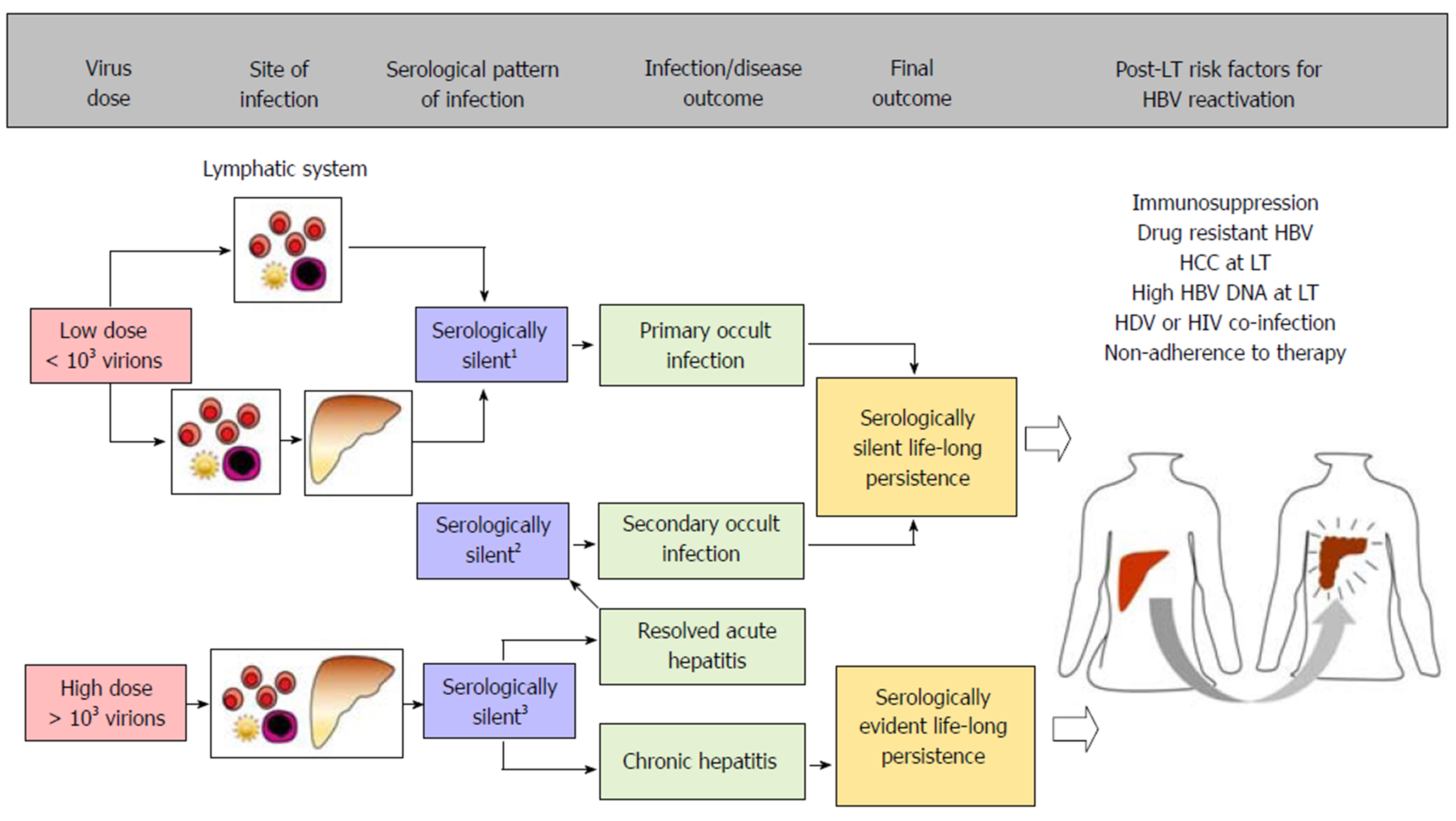Copyright
©The Author(s) 2018.
World J Hepatol. Mar 27, 2018; 10(3): 352-370
Published online Mar 27, 2018. doi: 10.4254/wjh.v10.i3.352
Published online Mar 27, 2018. doi: 10.4254/wjh.v10.i3.352
Figure 2 Generalized concept of overt and occult hepatitis B virus infections based on the data from the woodchuck model of hepatitis B, their long-term outcomes, and associated risk factors for hepatitis B virus reactivation following liver transplant.
Based on experimental infection in the woodchuck model (Mulrooney-Cousins PM, Michalak TI, 2015[92]). 1Serologically silent infection: HBsAg, anti-HBc and anti-HBs negative; HBV DNA positive; 2Serologically silent infection: HBsAg negative, anti-HBc positive, anti-HBs positive or negative; HBV DNA positive; 3Serologically evident infection: HBsAg and anti-HBc positive, anti-HBs negative. HBV DNA positive. SOI: Secondary occult infection; POI: Primary occult infection; LT: Liver transplant; HCC: Hepatocellular carcinoma; HBV: Hepatitis B virus; HDV: Hepatitis D virus; HBsAg: HBV surface antigen; anti-HBc: Antibodies to HBV core antigen; anti-HBs: Antibodies to HBV surface antigen.
- Citation: Chauhan R, Lingala S, Gadiparthi C, Lahiri N, Mohanty SR, Wu J, Michalak TI, Satapathy SK. Reactivation of hepatitis B after liver transplantation: Current knowledge, molecular mechanisms and implications in management. World J Hepatol 2018; 10(3): 352-370
- URL: https://www.wjgnet.com/1948-5182/full/v10/i3/352.htm
- DOI: https://dx.doi.org/10.4254/wjh.v10.i3.352









